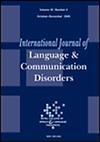Arabic Aphasia Research Through a Clinical and Linguistic Lens: A Systematic Review of Current Limitations and Future Directions
Abstract
Background
Aphasia has been widely investigated for English and other Indo-European languages such as German, Dutch, Italian and Spanish. It has been reported that published studies on Arabic aphasia only comprised five studies, accounting for only 0.40% of the total literature on aphasia between 2000 and 2009.
Aims
The present paper is a systematic review of studies that have been published on Arabic aphasia. The main objective of this study is to review the body of aphasia literature on Arabic, to identify strengths and weaknesses in the available clinical resources for Arabic aphasia.
Methods
Preferred Reporting Items for Systematic Reviews and Meta-Analyses (PRISMA) guidelines were followed. Five relevant databases were identified and searched using predefined keywords. A 6th source, Google Scholar, was also used to yield grey literature; these sources were screened on Scimago for quality assurance. Predefined eligibility criteria were then applied to the records that the initial search yielded. The final list of included studies was then qualitatively reviewed.
Main Contribution
The search yielded 48 studies. The resulting review identified a scarcity of research on assessment materials, efficacy of therapy and interventions and linguistic/psycholinguistic theory that underscores the development of clinical resources for Arabic aphasia. It suggested specific areas where development is required in each category. From the available research, it identified limitations in available materials for clinical assessment in Arabic aphasia. Specifically, that currently available materials are (a) primarily translations and adaptations of other languages rather than being developed with linguistically and culturally specific features of Arabic in mind; (b) are screening and short assessments rather than comprehensive batteries and (c) are not controlled for crucial psycholinguistic variables such as imageability and age of acquisition.
Conclusions
While research on Arabic aphasia has been growing in the past few years, it lacks in several areas of investigation, including certain methodological approaches, the varieties investigated, aphasia types and the formulation of valid assessment protocols and therapy interventions.
WHAT THIS STUDY ADDS
- Aphasia has been widely investigated for English and other Indo-European languages such as German, Dutch, Italian and Spanish. It has been reported that published studies on Arabic aphasia only comprised five studies, accounting for only 0.40% of the total literature on aphasia between 2000 and 2009 (Beveridge and Bak 2011). However, the selection of these studies was done from only 4 journals. There is a need for a comprehensive review of all studies to date on Arabic aphasia following PRISMA guidelines.
- This study reviewed 48 studies that presented original data on Arabic aphasia. We found that the majority of these studies were investigative in nature, where aphasic data was used to investigate linguistic or psycholinguistic theory. While these studies have clinical applications too, studies that developed protocols and materials for clinical assessment and tested the efficacy of various therapies and interventions in Arabic were comparatively limited.
- Specific future directions are provided to aid in the development of assessments and interventions in service of Arabic-speaking persons with aphasia.


 求助内容:
求助内容: 应助结果提醒方式:
应助结果提醒方式:


